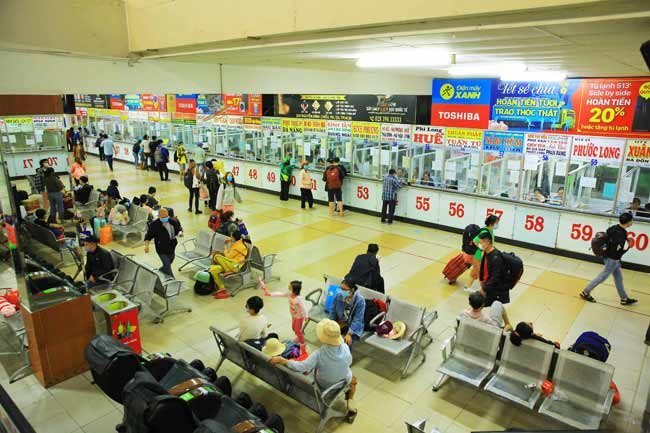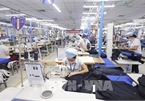
However, impressive yet elusive figures representing GDP (Growth Domestic Product) fail to paint the realistic picture of the hardships currently endured by both businesses and the people as Covid-19 outbreaks have continued to devastate localities nationwide.
Although the prospects are brighter than a year ago, the path to recovery of the global economy remains bumpy and unclear. In the middle of this year, key economic institutions all agreed to raise the global GDP by one percentage point against the forecast made earlier to between 5.8-6% due mostly to massive inoculation campaigns and huge fiscal aid packages carried out in developed countries. However, the recovery is uneven and, different from the situation a year ago, developing and newly emerging economies are facing difficulties due to the wide-spreading variants of the Coronavirus.
In Vietnam, GDP growth in the first six months reached 5.64%, during which the agro-forestry-fishery sector and industry and construction had almost been back to the level in the pre-pandemic period. Sectors which achieved the most impressive growth were those relevant to export, disease prevention, essential goods production and beneficiaries of loosened macro policies, such as the manufacturing and processing industry (+11.42%); electrical power/gas/water generation and transmission (+8.16%); healthcare and social support (+10.47%); and finance - banking - insurance (+9.27%). The average inflation rate was kept at a lower level compared with many years (1.47% year on year). However, at present, prices have increased during the past few months due to high costs of input materials, fuel, logistics, land rent and those related to disease prevention activities which are a heavier burden on companies across the board.
In the first half of 2021, Vietnam in general achieved considerable growth targets in the context of a stable macro environment. However, impressive yet elusive figures representing GDP fail to paint the realistic picture of the hardships currently endured by both businesses and the people when outbreaks have continued to devastate localities nationwide. The PMI (Purchasing Managers’ Index), which measures the health of the corporate sector, suddenly plummeted to only 44.1 points in June and is predicted to plunge deeper after Directive 16 on lockdown has been imposed on key economic hubs in both ends of the countries. The number of disbanded or temporarily shut down firms and unemployment is on the rise rapidly while a host of economic activities have to face risks of disruption in the long term. At the same time, foreign investment capital is likely to be pending or even redirected away from Vietnam.
The National Assembly has not revised/has yet to revise economic targets for 2021. Nonetheless, given the complication of the pandemic, indicators set earlier—such as GDP, consumer price index or export—are now seemingly targets one tries to meet rather than absolute requirements. Policies currently in use are in favor of pandemic fight combined with measures to support the people and businesses while minimizing economic losses.
Economic recovery cannot be detached from massive inoculation. In this respect, Vietnam is lagging behind many other countries in the world and in the region, and even the quantities of vaccines she has clinched in her hands. By July 24, only 4.5 million vaccine doses had been used for over 4% of Vietnam’s population (of them only 8% had received two shots), accounting for over 40% of the total vaccine doses already received since March 2021. Therefore, accelerating the vaccination process and adequately handling incongruity in the shortage of healthcare equipment and cross-infections in lockdown areas, bottlenecks in goods distribution due to extremities in pandemic prevention should be sufficiently addressed to spare the economy from heavier losses.
In addition, aid packages relevant to social welfare for the people and businesses should be put on top of the list. To enable affected people to access aid packages in the quickest and most convenient ways, aside from simple and feasible criteria, grassroots authorities [through to dan pho (“sub-quarter”), a Vietnamese term which means a group of households in a quarter] should make lists of beneficiaries and publicly post them on local government portals so that everybody could monitor them. In the current context, criteria and procedures should be minimized while transparency would reduce possible misconducts.
When the informal sector becomes vulnerable and its endurance gets worse, people in this sector should be paid due attention to. As the Government is faithful to the motto “not letting the people short of food and clothes,” a hotline should be set up in each locality so that needy people could resort to if need be.
For enterprises and business households that have had to halt operation or whose income have plummeted due to social distancing measures, the suitable support which can be accelerated is the use of social welfare fund to give/extend loans to them so that their work forces can be paid. Aside from falling income, the condition for the eligibility for the support is the beneficiary in question has to retain workers, which will help them continue to exist and rapidly return to the market once the pandemic is over.
Nobody knows when Covid-19 is over. Nor do people know what dangerous virus variants would emerge next. Therefore, fiscal resources should amply fund purchases of medical equipment and build/upgrade healthcare personnel. Worst-case scenarios should also be built to avoid the passivity which has been seen.
In addition, fiscal policies should be formulated to boost disbursement of national infrastructure projects. At the same time, a suitable monetary policy, which removes the ceiling credit growth, should be in place together with a reasonable growth rate of money supply under control (at 10%) so that the mounting inflationary pressure can be resisted by making use of appropriate risk-management measures.
Assoc. Prof. Pham The Anh
National Economics University

COVID-19 threatens to break supply chains in the south
Supply chains in HCM City and the southern provinces are at great risk of snapping because many businesses have been forced to stop operating or...